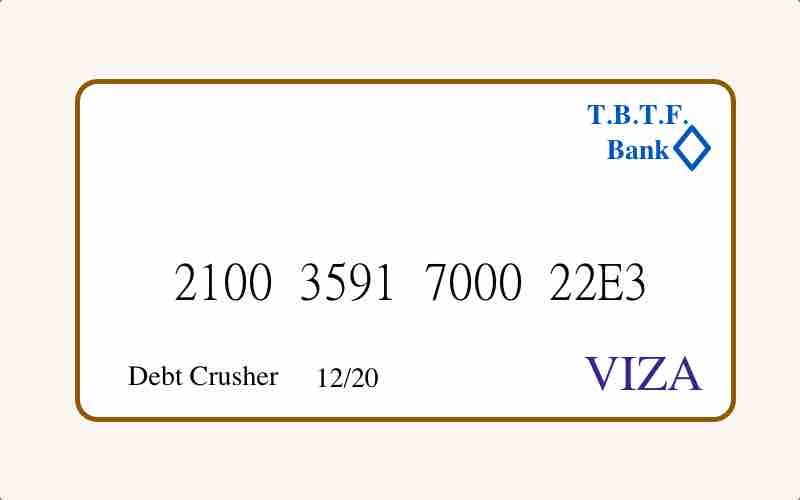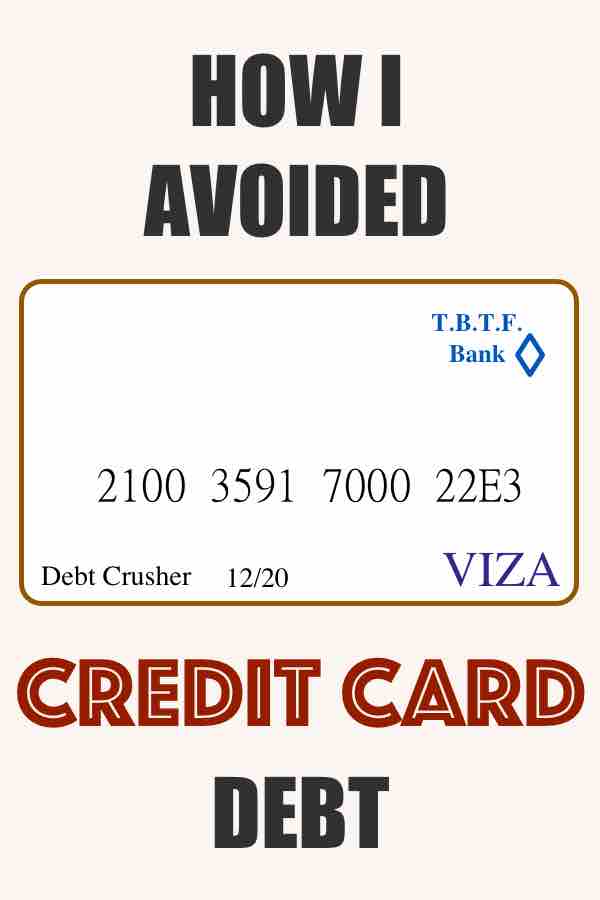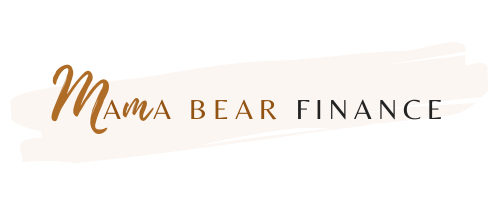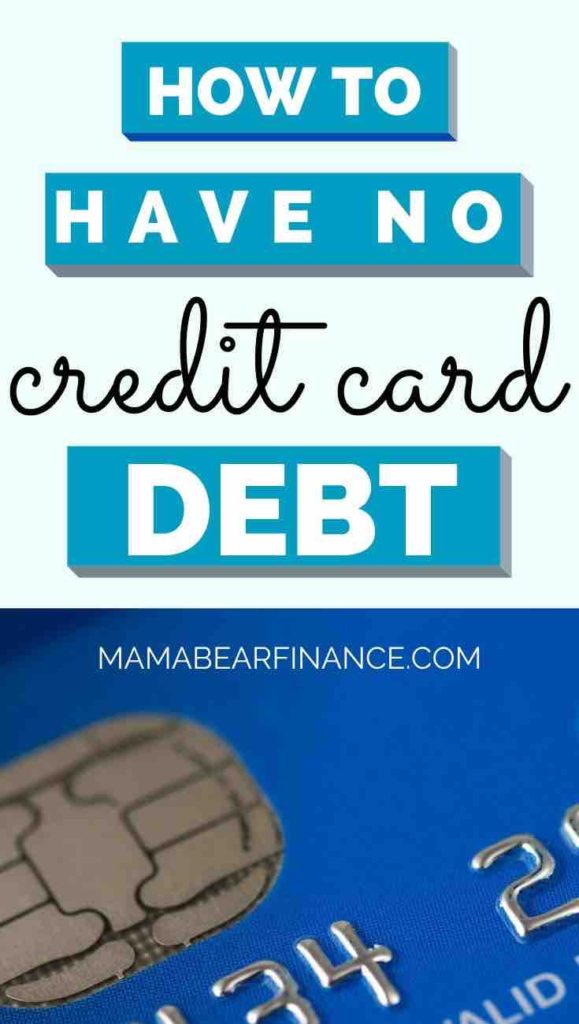Having credit card debt is like having a ball and chain tied to our ankle – the longer we drag it, the more it hurts. This is the principle I held as soon as I got my first credit card at age 18, and since then I avoided credit card debt like it was a plague.
I’m on the extreme side of course. Credit cards can be super awesome as they give us rewards points.
On top of that, having credit cards can help build up credit history. This was actually the motivation for my applying for a credit card in the first place.
So I don’t actually have problems with credit cards, I just have problem with their exuberant high interest fees.
Here’s a story that really solidified my position on credit card debt. And hopefully, it’ll inspire you to avoid having it too.
This post may contain affiliate links, which means I may receive a commission, at no extra cost to you, if you make a purchase through a link. Please see my full disclosure for further information.

The BMW Girl and the Man with Holes on His Shirt
I worked as a bank teller for two years during college. My day-to-day duty was to help everyday people cash their checks, make deposits, and process payments.
Between 2005 – 2007, people weren’t as keen on using the ATM as they are today, and online banking hasn’t gained steam yet.
So we were busy.
In one normal business day, I must have helped over 200 customers in person. During busy days, the numbers can go up to 400.
One day, a girl in her early 20s came up to my window and wanted to make some payments. She had her BMW keychain proudly displayed in one hand while handing me her payment slips in the other.
She was neatly dressed with her nails polished, and her perfume lightly seeped through the tiny opening of the bullet-proof window that stood between us.
The first payment slip she handed me was for an installment loan – the BMW car payment in fact. She wanted to make the payment from her checking account.
Then the next payment… now this next payment was a huge shocker for me. It was a credit card payment slip with thousands of dollars in balance – I forgot the exact figure, but it was somewhere in the high thousands.
She opted to use her checking account to make the payment again – the minimum payment of $15 to be exact.
To make the transfer, she had to swipe her debit card so that I can pulled up her entire account profile. I saw that she had a couple of hundreds in her checking account.
That went fine. She said thanks and we bid farewell.
A Complete 180
The next customer was a man in his 40s or 50s with a timid demeanor. Unlike the well-dressed customer I had helped previously, this guy had multiple holes on his T-shirt.
I think this was the first time I saw a man who came inside a bank with such an unforgettably beat-up T-shirt. But that’s okay, there was no dress code for customers.
He was polite and handed me just one payment slip – his credit card bill. While he swipe his debit card and enter his pin code, he told me that he would like to pay his credit card balance in full.
His account information popped up on my screen and I saw that he had close to $500,000 in his savings account and some 5 digits in his checking. I had to blink twice.
I was shocked not only because it was totally unexpected, but of my preconditioned imperfect judgement.
Without showing my naivety, I processed the payment and asked if he would like to open a short-term CD which yielded 3% interest at the time. He politely declined and went on his way.
How interesting, I thought to myself. The girl who seemingly appeared rich was poor and the man who appeared poor was actually rich!
I looked out the window and saw the man with the beat-up T-shirt pulled out of the parking spot with his equally beat-up Toyota pick-up truck.
What made me remember this exact moment was the huge contrast between these two customers.
As a young 19-year-old, this was the first time I came across to how others manage their money.
Throughout the next two years, I had noticed a recurring trend: Those who would pay off their credit card balance in full tend to have the most in savings, and those who make minimum payments tend to have the least.
Though this was just my observation, it was nevertheless a revelation.
How to Avoid Having Credit Card Debt
Another turning point for my aversion to credit card debt was reading the book, “Affluenza: The All-Consuming Epidemic.” This book completely transformed my mind in terms of spending and consumerism.
As a college student, this book was an eye-opener. It made me realize that consumerism only yields temporary satisfaction but not everlasting happiness. It also made me look deeper within to understand my true values.
After that, my spending habit became much more healthier as I stopped chasing the latest fashion, gadgets, or whatever else a 19-year-old would chase at the time.
But I’m not always a sensible spender. In fact, I have caught myself doing frivolous spending on luxury items from time-to-time.
The truth is that I love spending just as much as anyone else. But I’d only do so after all of my other priorities are met. I was so focused on my financial goals that I never put my spending inclination before them.
But most importantly, I had made an unwavering commitment to pay off my credit card debt in full each and every month. Here are my top three tips for those who want to rid themselves of credit card debt:
Never Carry-over a Credit Card Balance
The story I told you above left an impactful memory for me because of the huge contrast in the ways those customers managed their money.
But the truth is that it doesn’t matter who they were or how they looked, what matters is that those who would paid off their credit cards in full tend to have a healthier bank balance.
There seems to be a pattern where the people who live within their means tend to care less about how others view them. And as a result, they save more and spend wisely.
And so my conclusion is that the best way to avoid having credit card debt is simply to never carry-over a credit card balance.
While I know this may seem easier said than done, it is certainly possible if you can avoid lifestyle inflation or find an intrinsic reason that triumphs above all else.
Don’t Spend More Than You Could Afford
Spending above one’s mean is the quickest way to get into debt.
According to the Federal Reserve, the total revolving credit hovers at $1 trillion! Revolving means that you do not have a fixed payment and the credit limit resets every time you bring down the balance.
The one way that helped me keep spending under control is to set financial goals. For the longest time, it had been about buying a house. Once I achieved that, it was then to pay it off in 8 years’ time. Today, my goal is to achieve financial independence.
Having a series of goals actually helps me to evaluate my priorities and trade-offs.
However, as mentioned, I’m prone to consumerism and have bought lots of unnecessary things.
The problem was that I knew they were frivolous and yet I went for it. Part of it was peer pressure, but the biggest part was my inherent weakness.
There’s a huge part of me that saids I don’t really need that expensive purse or that fancy sunglasses, but then FOMO had the best of me.
Luckily I was able to tame most of the bigger purchases by using cash. Somehow, counting dollar bills is way more painful than swiping a credit card. This is especially true when you have to count in thousands. You’re really not going to feel great about splurging your whole month’s pay check on that Chanel purse.
So when I can, I tried to use credit card only on small ticket items, and I always spend below my means.
Pay Close Attention to Credit Card Interest
Credit card interest is the fee charged by the lender for carrying over any credit card balance. The amount of this charge is based on the interest rate or APR.
According to CreditCards.com, the average interest rate of a credit card is 16%. This means that if you carry $100 of balance; you give about $16 annually to the lender.
$16 doesn’t sound like much, but if you carry an average balance of $5,673 like most adults, then that becomes $895 of interest in a year!
Calculating the annual interest is not a straightforward process. Here’s an article that explains how it works. In the above example, I assumed 16% as the APR in a 365-day period where the average balance remains unchanged.
Luckily, you should be able to find the interest charged total in your credit card bill without doing manual calculation.
The main goal here is to understand how much interest you pay every month. This interest is equivalent to money tossed down the drain because you don’t get anything out of it.
By paying attention to the interest charged, you might feel less tempted to add more balance to your credit card.
My goal has always been to aim at keeping my interest charge at zero every single month.
Seeing that big fat ZERO on my credit card bill is absolutely an amazing feeling.
Let’s aim for the zero!

PIN this credit card


